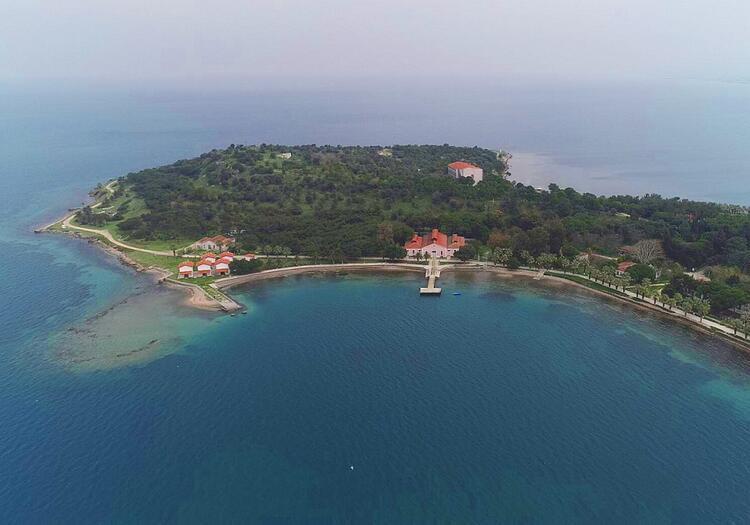
A tender has been launched for the restoration of 16 buildings located on “Quarantine Island,” one of the three quarantine islands registered in the world in the Aegean province of İzmir’s Urla district.
The island, which spans an area of 323,000 square meters, was converted into a quarantine center amid an epidemic 155 years ago.
Quarantine Island, which has been secluded since the epidemic 155 years ago ended, has recently drawn attention again in Turkey, as it battles the COVID-19 pandemic which has ravaged the world.
The General Directorate of Health of Borders and Coasts, which has the right to use the island, has opened a tender for the restoration of the 16 buildings on the island at a time when quarantines have become the new normal.
The restoration tender, which was approved on May 8 and announced on May 13, will be held on June 16.
Along with the 14 other buildings, primarily the “Grand Isolation Pavilion” and the “Small Isolation Pavilion” on the island, which is a first-degree archaeological site, will be restored to its original state, according to the announcement.
The quarantine station was built almost 150 years ago and was in operation between 1865 and 1950 and was generally used as a way station by French mariners and passengers to and from İzmir in the Ottoman times.
It was one of the leading health centers at the time, where terminal diseases such as plague and typhoid were sought to be squashed.
The era’s most modern materials used in the Urla quarantine facility still survives including sterilization materials, a railway system used by sick people in the port, disinfector boilers and shower cabins.
When the center was still in operation, ships from abroad anchored one mile offshore and a doctor, the station’s director and a registering director headed out to the waiting ship to register the passengers.
Those found to be carrying a contagious disease were taken to separate boats and kept in patient rooms called “isolation pavilions.”
Through a specially-built rail system, passengers’ belongings would be taken to the sterilization sections of the quarantine station, while passengers would also be taken to a shower area with new towels, loincloths and clogs.
Their clothes were disinfected in the sterilization unit. After taking a shower, they were hosted in special places and offered food and drink. Next, they would undergo doctor’s examination. If nobody on the ship was ill, the passengers were permitted to leave after a checkup.
If even one passenger was ill, however, all passengers were kept in guest houses until the patient got better or died, during which the health of the other passengers would constantly be monitored.
Converting the island into a museum a few years ago was being discussed, but no steps were taken in this direction until the pandemic began.